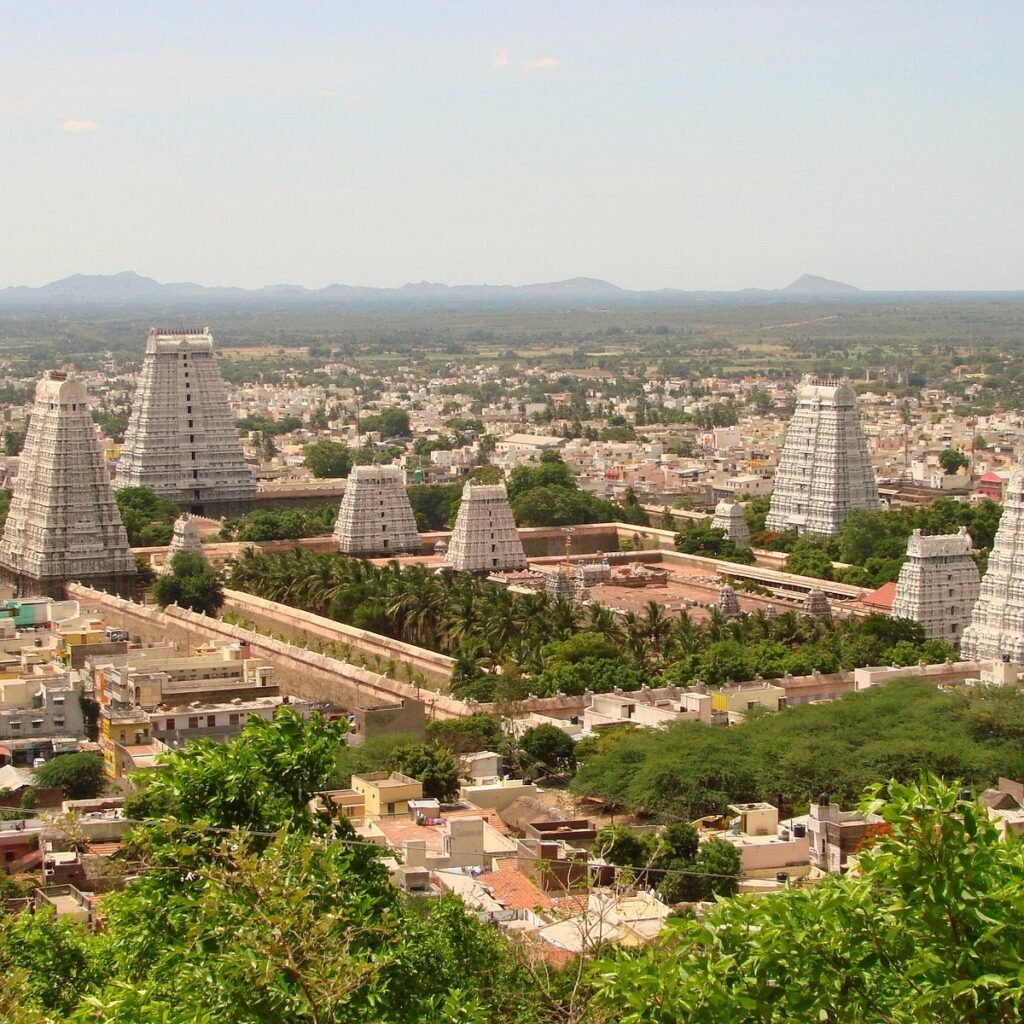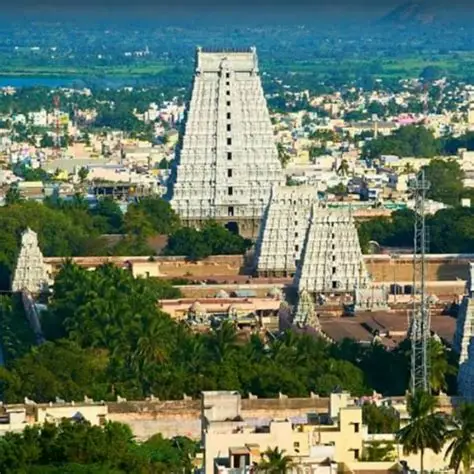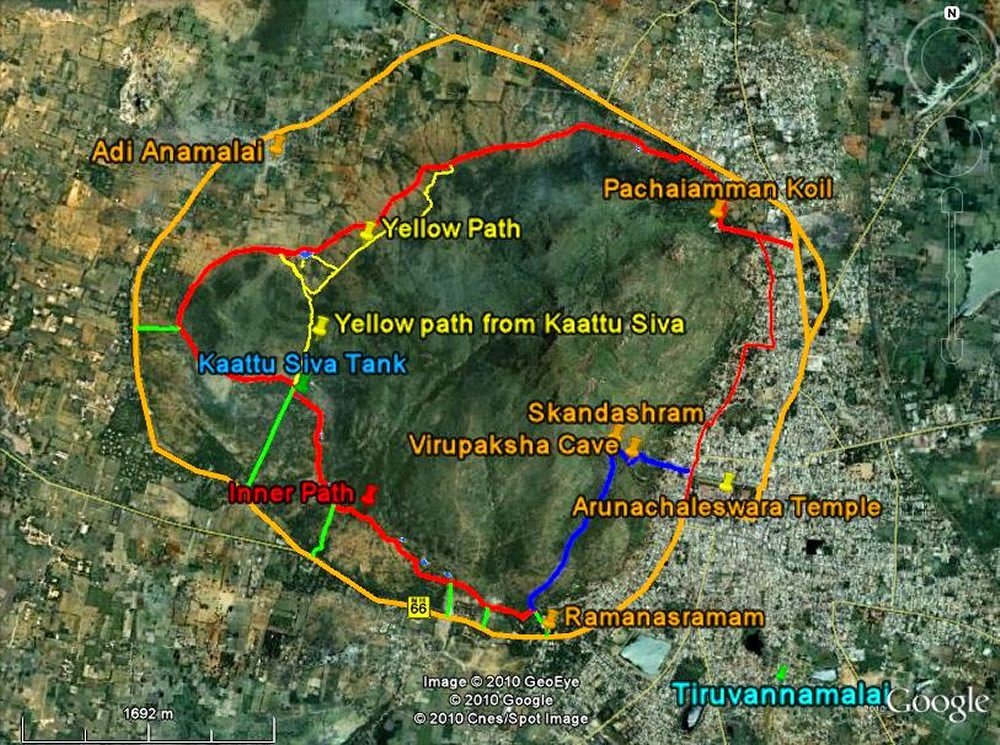Nestled at the foot of the legendary Arunachala Hill in Tiruvannamalai, Tamil Nadu, the Arunachalesvara Temple—also known as the Annamalaiyar Temple—is a breathtaking blend of devotion, mythology, and architectural grandeur. This article unravels the sacred mysteries, timeless legends, and the best times to visit this spiritual marvel.
1. A Towering Monument to the Element of Fire
The Arunachalesvara Temple stands as one of the Pancha Bhoota Sthalams, representing Agni (fire) among the five cosmic elements. Legend holds that Lord Shiva once manifested here as an infinite column of fire to settle a dispute with Brahma and Vishnu. This divine blaze is symbolically enshrined in the central Agni Lingam, the temple’s focal point.

2. Gopurams: Gateways to Cosmic Energy
Four colossal gateway towers, or gopurams, rise above the complex—most notably the eastern Rajagopuram at nearly 66 m high, renowned as one of India’s tallest. Some devotees and scholars suggest these towers are aligned with celestial constellations, believed to channel cosmic energy and elevate spiritual consciousness.

3. The Silent Symbolism of Nataraja
Within the temple lies a mesmerizing shrine to Nataraja, Shiva’s cosmic dancer. This sculpture epitomizes the balance of creation, preservation, and destruction—encouraging devotees to reflect on life’s ephemeral flow and the deeper cycles of existence.
4. The Sacred Ritual of Girivalam
Each full moon, thousands of pilgrims embark on a 14 km barefoot Girivalam—circumnavigating Arunachala Hill. Along the route are Ashta Lingams, each linked to one of the eight cardinal directions and corresponding moon signs. The act is believed to cleanse karma and guide seekers toward spiritual liberation.

5. Divine Romance at Tiruvoodal
The annual Tiruvoodal Festival, held in January, reenacts the mythic “playful quarrel” between Shiva and Parvati, bringing divine emotions to life in a public drama. This celebration reveals that even gods partake in the complexities of love and reconciliation.
6. Marvels of Architecture & History
Covering around 25 acres, the temple was initially constructed in the 7th–9th centuries by the Pallavas and Cholas,and further expanded by the Vijayanagara kings. Highlights include:
- The 1000-pillared hall with exquisitely carved mythical beings.
- Seven sacred temple tanks such as Agni Theertham and Brahma Theertham, believed to possess purifying and healing energies.
- Multiple Nandi statues, including the majestic Periya Nandi, standing guard at various precincts.

Best Times to Visit
- October to March: Offers pleasant weather and coincides with the grand Karthigai Deepam (November–December) festival, where an enormous lamp is kindled on the hilltop—visible for miles and drawing millions of worshippers.
- Full Moon Nights: Perfect for experiencing Girivalam path in its profound spiritual atmosphere.
- Avoid Monsoon Heaviness (July–September), unless prepared for seasonal rains that make surroundings verdant yet humid.
Why It Continues to Captivate
Arunachala Temple is more than a monument—it’s a living symbol of cosmic fire, divine dance, celestial geometry, and sacred festivals. Whether you seek historical grandeur, architectural detail, or profound spiritual experiences, each holy ritual, carving, and walkway reveals a deeper layer of devotion and cosmic harmony.
In Conclusion
From the blazing mysteries of the Agni Lingam to the moonlit ritual of Girivalam, Arunachalesvara Temple offers a deeply immersive spiritual journey. Plan your visit in the cool months, align with festival celebrations for unforgettable rituals, and let the timeless energy of Arunachala ignite your path.
Last Updated on: Saturday, July 12, 2025 6:11 pm by Goulikar Abhishek | Published by: Goulikar Abhishek on Saturday, July 12, 2025 6:11 pm | News Categories: News

